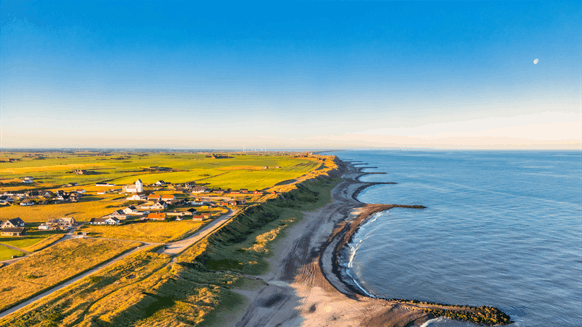
SCHWENK Zement GmbH & Co KG has signed a deal with TotalEnergies SE to acquire a 35 percent stake in the Bifrost carbon capture and storage (CCS) project on Denmark’s side of the North Sea.
The German cement producer “chose Bifrost to be its preferred solution to store its future emissions”, TotalEnergies said in a press release.
After the transaction, which is subject to customary conditions including regulatory approvals, the French energy giant will retain 45 percent as operator. Danish state-owned oil and gas producer Nordsofonden owns the remaining 20 percent.
The farm-down agreement was signed between SCHWENK’s Danish affiliate CarbonVault and TotalEnergies E&P Denmark A/S.
Part of TotalEnergies’ North Sea CCS portfolio, Bifrost is a European Union Project of Common Interest that aims to position Denmark as a regional CCS storage hub. It is envisioned to store as much as 335 million metric tons of carbon dioxide over 35 years, the project’s website says.
The partners target to start injection 2030, with an annual ramp-up rate of five million metric tons, as declared on the project website.
Last year a study for the project supported by the Danish Energy Agency’s Energy Technology Development and Demonstration Program found that two natural gas reservoirs of the Harald fields are, as per the study report on the project website, “highly suited for permanent storage of CO2 in a safe and cost-effective way”.
CO2 captured on land would be transported via specialized shipping or existing pipelines to the Harold platform 250 kilometers (155.34 miles) off Denmark’s west coast. The captured emissions would be injected into the gas reservoirs, as envisioned by the study.
“Here – more than 2.5 kilometers below the seabed – the CO2 molecules are replacing the natural gas molecules previously occupying the pore spaces in the reservoir rocks”, the study said. “The CO2 is trapped below seals of tight rocks – seals that trapped the natural gas in the reservoirs for millions of years without leakage, proving them to be highly effective.
“The Harald fields have been chosen for the project because of the existing infrastructure, the well-known and suitable geology, the shallow sea water depth and the central location for major national and European CO2 emitters.
“The depleted Harald West sandstone reservoir is targeting in the first phase to store two to three million tons CO2 yearly.
“By adding the Harald East chalk reservoir as an upside, the injection capacity may be increased significantly. Chalk is the main reservoir type of the oil and gas fields in the Danish North Sea.
“Accordingly, the success of Harald East could serve as an important stepstone in the efforts to store CO2 in offshore Denmark. With a storage capacity of several million tons per year, the Harald fields are the perfect destination for the Danish CCS adventure to take off at scale”.
This year the Bifrost consortium has scheduled an assessment of additional potential offshore storage sites through the analysis of seismic data obtained 2023. The partners are also scheduled to study potential partnerships with terminal, pipeline and shipping owners, according to the project website.
In 2026-27 the partners plan to apply to renew Bifrost’s storage licenses, as well as conduct engineering design studies, the site says.
Source: by Jov Onsat, Rigzone Staff
